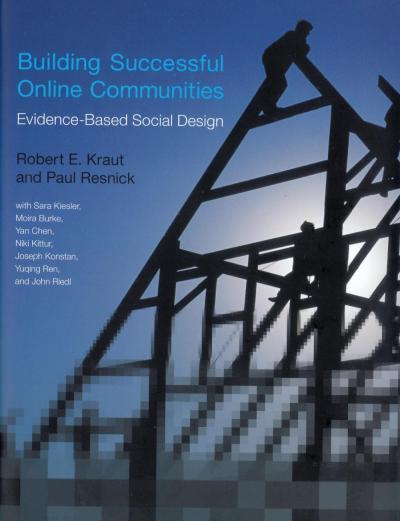Web Link(s)
Book Draws Lessons from Social Science to Guide Creation of Online Communities

Online communities are among the most popular destinations on the Internet, but attempts to create social networking sites often meet with failure. In a new book, Carnegie Mellon University’s Robert E. Kraut and the University of Michigan’s Paul Resnick use evidence from the social sciences and their own research to suggest ways that organizers can effectively address major design challenges.
The book, “Building Successful Online Communities: Evidence-Based Social Design,” is an outgrowth of the CommunityLab, a five-year research project about online communities sponsored by the National Science Foundation and conducted at Carnegie Mellon, Michigan and the University of Minnesota.
“When we look at online communities such as Facebook or Wikipedia, what we see are the survivors,” said Kraut, the Herbert A. Simon Professor in Carnegie Mellon’s Human-Computer Interaction Institute. “But most of the online communities that are created fail.” The English version of Wikipedia may have more than 3.6 million articles, but of the more than 9,000 information-sharing wikis that use the same Mediawiki software, the median number of people who have ever contributed anything to those sites is just seven, he noted.
It takes more than good intentions to create an online community, as evidenced by every cancer support group that establishes a Web presence only to wither because no one participates. Organizers must not only attract newcomers, but find ways to socialize with them and build commitment to the community. And they must also deal effectively with participants who are disruptive.
Many people try to build online communities by aping what successful social networking sites have done, or by using features already incorporated into their software package. But Kraut and Resnick, a professor at Michigan’s School of Information, point out that the cookie-cutter approach rarely works. The issue of moderating online discussions, for instance, is rife with pitfalls. Moderators need to make sure the conversations are relevant to the topic and the community, but participants also have to get to know each other if they are to feel part of a community. Sometimes, particularly following a major event such as the 9/11 attacks, going off-topic may help build cohesion.
The authors, working with more than a half-dozen colleagues from CMU, Michigan and Minnesota, draw on literature from psychology, economics and other social sciences, as well as their research, to translate general findings into useful design claims, presenting alternatives that creators can consider for the needs of their particular communities. They draw on theories of interpersonal bond formation, for instance, to show how to build commitment within the online community and explain how to motivate members to contribute information based on the theory of public goods.
For more information about “Building Successful Online Communities,” which was published by The MIT Press, visit http://www.amazon.com/Building-Successful-Online-Communities-Evidence-Based/dp/0262016575.

